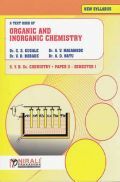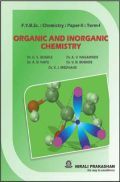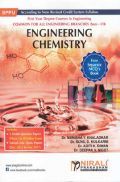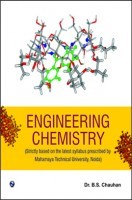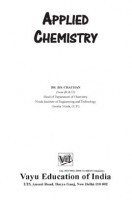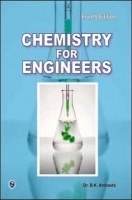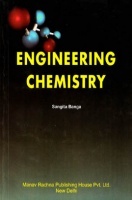• The Book Has Been Designed In Such A Way That The Students, As Well As The Teachers, Will Feel Confident In Achieving The General And Specific Objectives Recommended In The Syllabus Designed By The Curriculum Research And Development Division (Crdd) Of The Ministry Of Education, Science, And Sports.
• The Book Closely Follows The Order In Which The Curriculum For Senior High School Chemistry Has Been Organised This Will Ensure That All Aspects Of The Syllabus Are Covered.
• Each Unit Begins With A List Of Specific Objectives So That The Student Knows What Goals Are Expected To Be Achieved By A Careful Study Of The Unit.
• The Language Level And Depth In The Text Reflect The Year Group For Which The Text Is Written. This Facilitates Easy Reading And Understanding.
• The Text Is Well And Attractively Illustrated With Large, Simple, Clear, And Fully Labelled Diagrams To Aid Quick Understanding And To Arouse Interest.
• A Large Number Of Different Types Of Numerical Problems And Conceptual Questions Have Been Solved As Examples Wherever Required.
• Each Unit Ends With A Set Of Multiple Choice And Discussion Questions Entitled Evaluate Yourself. This Is To Enable The Student to Check Her Understanding Of The Text. These Questions Cover The Full Range Of The Aims And Objectives Of The Syllabus.
• Answers To The Objective Questions, Fill In The Blanks, And Numerical Problems Are Provided At The End Of Each Selfevaluation Exercise.
This book Useful for Chemistry Students.
SHS - 2
Section 1: Introduction To Chemistry
1. Chemistry As A Discipline
2. Measurement Of Physical Quantities
3. Basic Safety Laboratory Practices
Section 2: Atomic Structure
4. Particulate Nature Of Matter
5. Structure Of Atom
6. Periodicity
Section 3: Chemical Bonds
7. Interatomic Bonding
8. Intermolecular Bonding
9. Hybridization And Shapes Of Molecules
Section 4: Conservation Of Matter And Stoichiometry
10. Carbon-12 Scale
11. Solutions
12. Stoichiometry And Chemical Equations
13. Nuclear Chemistry
Section 5: States Of Matter
14. Solids And Liquids
15. Kinetic Molecular Model, Gases And Their Properties
SHS - 3
Section 1: Energy And Energy Changes
16. Energy Changes In Physical And Chemical Processes
17. Energy Cycles And Bond Enthalpies
Section 2: Inorganic Chemistry
18. Periodic Chemistry
19. Transition Chemistry
Section 3: Chemical Kinetics And Equilibrium
20. Rate Of Reactions
21. Equilibrium
Section 4: Acids And Bases
22. The Concepts And Properties Of Acids And Bases
23. Acid-base Titrations
24. Classification Of Acids And Bases
25. Concept Of Ph And pOH
26. Buffer Solutions
27. Acid-base Indicators
28. Solubility Of Substances
29. Salts And Chemicals From
Section 5: Redox Reactions And Electrochemistry
30. Oxidation-reduction Processes And Oxidisingreducing Agents
31. Balancing Redox Reactions
32. Redox Titrations
33. Electrochemical Cells
34. Electrolytic Cells
35. Corrosion Of Metals
Section 6: Chemistry Of Carbon Compounds
36. Bonding In Carbon
37. Classification Of Organic Compounds
38. Identification Of Elements In Organic Compounds
39. Separation And Purification Of Organic Compounds
40. Alkanes
41. Alkenes
42. Alkynes
43. Benzene
44. Alkanols
45. Carbonyl Compounds
46. Alkanoic Acid
47. Alkanoic Acid Derivatives: Amides
48. Alkanoic Acid Derivatives: Alkyl Alkanoate (Esters)
SHS - 4
Section 1: Chemistry Industry And Environment
49. Chemical Industry
50. Extraction Of Metals
51. Extraction Of Crude Oil And Petroleum Processing
52. Environmental Pollution
53. Biotechnology
54. Glass And Its Uses
55. Cement And Its Uses
Section 2: Basic Biochemistry
56. Proteins
57. Carbohydrates
58. Fats And Oils
59. Synthetic Polymers
Appendices
Index







